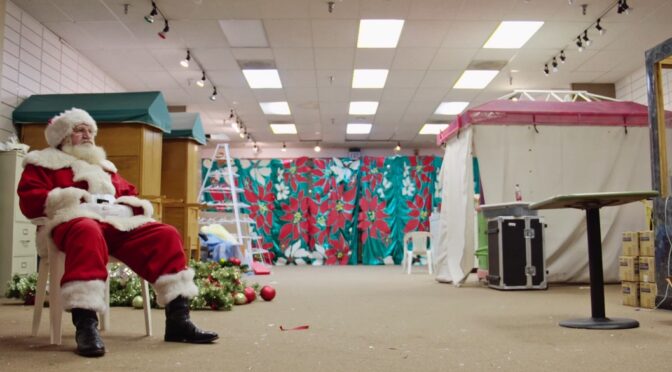 The modern-day shopping mall is a dying breed in today’s digital climate. Customers are more willing to spend their hard-earned cash from the comfort of their sofas, draped in dressing gowns and slippers, than making the effort to go into a busy town centre for their desired goods. Such is the focus of JASPER MALL, a documentary made by Bradford Thomason and Brett Whitcomb that chronicles the year in the life of a dying shopping mall in Jasper, Alabama.
The modern-day shopping mall is a dying breed in today’s digital climate. Customers are more willing to spend their hard-earned cash from the comfort of their sofas, draped in dressing gowns and slippers, than making the effort to go into a busy town centre for their desired goods. Such is the focus of JASPER MALL, a documentary made by Bradford Thomason and Brett Whitcomb that chronicles the year in the life of a dying shopping mall in Jasper, Alabama.
“Jasper Mall is shrinking by the day.” “A worthless huge space that has gone to waste.” “This place is dying.” Such online obituaries encapsulate the decay and dilapidation that Jasper Mall has faced over the years, with many local reviews mourning the supposed death of their once beloved shopping centre. Thomason and Whitcomb’s documentary is told primarily through the perspective of the mall’s caretaker. Donning military-esque cargo trousers, it is as if he is going into battle for a war he cannot win: the battle for Jasper Mall’s survival. In a visual style that evokes video games, we follow closely behind the caretaker as he navigates barren car parks and empty stores branded with sales advertisements – a mall-turned-ghost-town that feels unsettlingly similar to modern-day Chernobyl.
This is an observational documentary with Thomason and Whitcomb adopting a passive role in the proceedings; they simply use the camera as an objective tool to watch the mall’s inhabitants shuffle zombie-like down empty corridors. The very few people who occupy the runtime are just everyday civilians going about their daily lives: a woman gets a spontaneous (and horrific) haircut from her friend, and there are four elderly gentlemen who re-appear over the course of the year, playing dominoes together. There is an endearing sense of loyalty and patriotism from these people, who are witnessing their mall dying but try their best to keep their fingers on its pulse. However, loyalty can only go so far. “A Victoria’s Secret is coming!”, a hopeful customer exclaims as a cry for capitalist rescue. But when an exodus is ongoing who is going to come in?
With such an observational style it is easy for this documentary to fall victim to its own banality. JASPER MALL is, indeed, banal. This is evident in the people who inhabit it and also by its cautious style, but in this mundanity there is something morbidly fascinating about. The film acts as if the viewer is witnessing a carcass take its final breaths – unable to do anything about its imminent demise. That is not to suggest that this is an uncomfortable watch, because there are moments of levity that alleviates such atmospheric intensity. A tender scene shows a jewellery repairman playing his electric guitar in his empty store, the camera panning out to expose an ‘I’m moving’ notice on his window, playing his final song for the few listeners who stroll past.
There are moments, however, which feel bizarrely out of place. An interracial young couple talks extensively about the discrimination they face by their family (who condemn their relationship), whose inclusion within the narrative feels completely misplaced and misjudged. Perhaps the filmmakers are making a statement about the community’s inability to ‘keep with the times’, both inside and outside of the mall. However, there is not enough focus devoted to this particular argument, nor is it fleshed out enough to hold any emotional engagement. There is a clear lack of focus in JASPER MALL that seeps throughout the documentary. The film makes no coherent suggestions as to why shopping malls like these are dying, nor does it suggest any actionable strategies to combat this pandemic. Documentaries aim to educate an audience about a subject matter that they were not familiar with, perhaps to make suggestions as to why the focus of the piece is worth documenting. JASPER MALL is so concerned with the small mall in Alabama that it fails to consider the bigger picture: this is a global pandemic, so what can we do about it?

